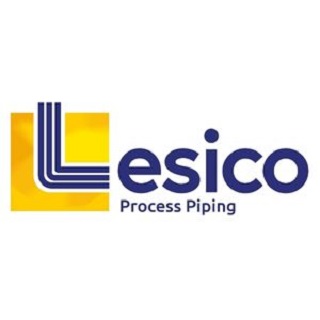The semiconductor industry is at the forefront of technological innovation, driving advancements in everything from smartphones and computers to medical devices and autonomous vehicles. The processes used to create these tiny, intricate chips are incredibly complex, and one of the critical aspects ensuring the successful production of semiconductors is semiconductor process piping. In this blog, we’ll explore what semiconductor piping is, its importance in the manufacturing process, and how innovations in this area continue to support the evolution of modern technology.
What is Semiconductor Piping?
Semiconductor piping refers to the specialized network of pipes used to transport gases, chemicals, and ultrapure water in semiconductor manufacturing facilities, also known as cleanrooms. The piping infrastructure is crucial for maintaining a contamination-free environment that supports high-quality chip production. Any impurities in the materials transported through these pipes can result in defects, rendering entire batches of semiconductors unusable.
Given the stringent purity requirements of semiconductor manufacturing, semiconductor process piping must be designed and installed with extreme precision. Materials used in these piping systems often include stainless steel, fluoropolymers, and other high-grade materials that can withstand harsh chemicals and maintain cleanliness standards.
The Importance of Purity in Semiconductor Manufacturing
The production of semiconductors involves several highly sensitive processes, such as etching, deposition, and lithography, which rely on the delivery of gases, chemicals, and water at specific levels of purity. Contamination at any point in the manufacturing process can lead to significant financial losses. This is why cleanroom environments must adhere to stringent contamination control measures, and piping systems play a critical role in this effort.
High-purity semiconductor piping is designed to minimize any potential sources of contamination. Specialized fittings, joints, and seals ensure that no particles or impurities are introduced into the system during the transportation of materials. Additionally, semiconductor process piping is often required to withstand extreme temperatures and aggressive chemicals without degrading, as even minute particles of corrosion or wear could compromise the purity of the process.
Challenges in Process Piping Projects
While process piping projects are essential to the smooth functioning of industrial operations, they come with their fair share of challenges. Some of the most common issues include:
- Complexity of Designs: The intricate nature of piping systems requires precise design and engineering, leaving little room for error.
- Tight Schedules: Industries often have strict timelines for project completion. Delays can cause interruptions in production, leading to substantial financial losses.
- High Costs: Piping projects are capital-intensive due to the materials and skilled labor required. Unanticipated issues, such as rework or material shortages, can quickly drive up costs.
- Safety Concerns: Working with hazardous materials and high-pressure systems poses significant safety risks, both during construction and throughout the system’s operational lifespan.
Given these challenges, it is imperative to adopt innovative solutions to optimize efficiency and reduce risks. This is where prefabrication mechanical process services come into play.
Innovations in Semiconductor Process Piping
The demand for smaller, faster, and more efficient semiconductors has led to innovations in the materials and methods used in semiconductor process piping. One of the major advancements is the development of PFA (Perfluoroalkoxy) and PTFE (Polytetrafluoroethylene) piping materials, which offer superior chemical resistance and high purity compared to traditional piping materials.
Moreover, newer piping systems are now designed with more efficient routing and better integration with modern cleanroom designs. These innovations help to streamline semiconductor manufacturing processes by reducing downtime, improving efficiency, and ensuring even higher standards of cleanliness.
Another significant advancement is the integration of automated monitoring systems within semiconductor process piping networks. These systems can detect minute variations in pressure, temperature, or flow rate, allowing for real-time adjustments that help maintain the optimal conditions for semiconductor manufacturing. This added layer of monitoring ensures that any potential issues are identified and addressed immediately, preventing costly disruptions in production.
Ensuring Longevity and Reliability
Reliability is key in semiconductor manufacturing, and the longevity of the piping system is paramount. Poor-quality materials or improperly installed systems can lead to leaks, contamination, and downtime, all of which can cause substantial losses. As a result, choosing the right materials and installation methods for semiconductor piping is crucial for the overall success of semiconductor fabrication.
Additionally, regular maintenance and monitoring of the piping infrastructure are essential to ensure long-term performance. Periodic inspections and testing help identify any issues before they become major problems, while cleaning and sanitization protocols keep the system free from contaminants.
Conclusion
As the semiconductor industry continues to evolve, the importance of high-quality semiconductor process piping cannot be overstated. These specialized piping systems are essential for maintaining the cleanliness, precision, and reliability required to produce advanced microchips. By investing in cutting-edge materials, design, and monitoring technologies, semiconductor manufacturers can ensure that their process piping systems support the production of ever-smaller, faster, and more powerful chips.
In a world where technology is advancing at a rapid pace, semiconductor piping will remain a critical factor in driving the innovations that shape our future. As companies push the boundaries of what’s possible in semiconductor manufacturing, improvements in piping systems will continue to play a pivotal role in ensuring success.


